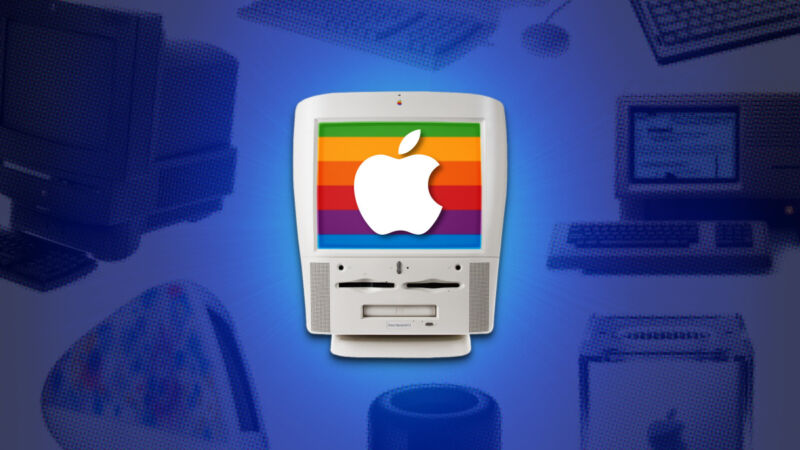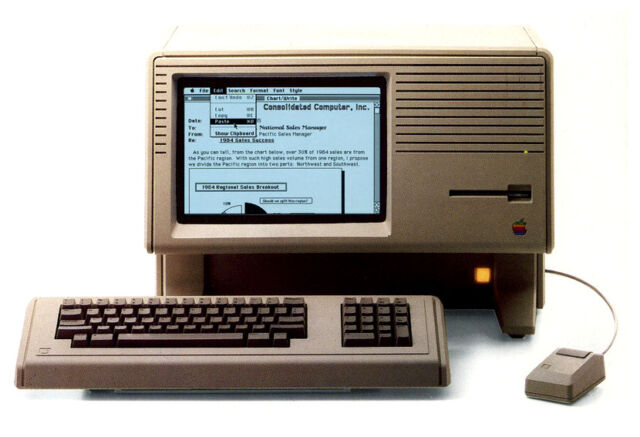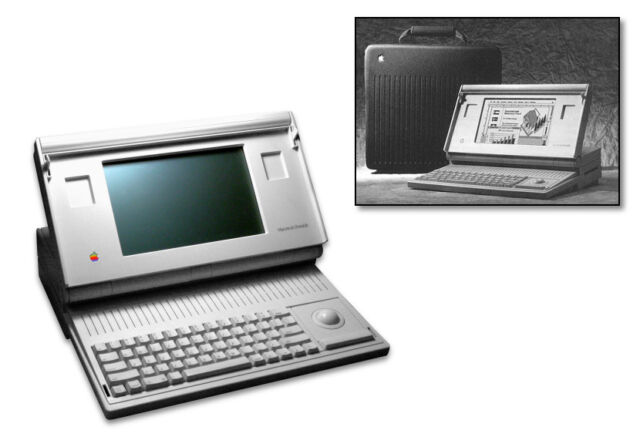
Benj Edwards / Jonathan Zufi / Apple
Forty years ago today, Apple released the first Macintosh. Since that fateful day in 1984, Apple has released hundreds of Mac models that run the gamut from amazing to strange. In honor of this birthday, we thought it would be fun to comb through history and pull out the rarest and most unusual production Mac models ever made—including one from another company.
Each machine listed below was manufactured and sold to the public—no prototypes here. These computers highlight not only Apple’s innovative spirit but also its willingness to take risks and experiment with design and functionality. It’s worth noting that what is “weird” in this case is a matter of opinion, so you might have your own personal picks that we missed. If that’s the case, let us know in the comments. And we’d love to hear what the Macintosh means to you on this 40th anniversary.
Special thanks to Jonathan Zufi for providing several photos for this article. In 2014, Zufi created an excellent coffee table book called Iconic: A Photographic Tribute to Apple Innovation and formerly ran the Shrine of Apple website.
Macintosh XL (1985)

Apple
In the pantheon of Macintosh, there are odd ducks, then there is the Macintosh XL. It’s officially a Mac, but it started life as its predecessor, the Apple Lisa 2. The Lisa line predated the Macintosh by one year, launching in 1983 for a pricey $9,995 ( about $31,348 today, adjusted), and it received a single revision in 1984. Macintosh dramatically undercut the Lisa in price and could run similar applications, so Apple was stuck with large amounts of unsold Lisa units.
When the Macintosh XL debuted in January 1985 as part of the Macintosh Office launch, it served as a clever way to clear out unsold Lisa 2 inventory. The plan was simple: bundle the Lisa 2 hardware with MacWorks XL—a program that let the Lisa run Macintosh software— and shoehorn it into the Macintosh line. (A curious tidbit: Lisas running MacWorks XL originally inspired the term “hackintosh.”)
Even being a “hackintosh,” the XL was no slouch. At a time when the most powerful Macintosh sported only 512KB of RAM, no hard drive, and a 9-inch display, the Macintosh XL (probably for “extra large”) featured a 12-inch monitor and could use up to 2MB of RAM and a 10MB internal hard disk. Interestingly, customers bought out the entire $3,995 Macintosh XL run within five months of its release, and even though customers were hungry for more, Apple had no intention of manufacturing any more Lisa-like machines. The XL met its end in June 1985.
Macintosh Portable (1989)

Benj Edwards, Apple
One could easily say that the original 1984 Macintosh was portable. It was compact, it included a built-in carrying handle, and it incorporated a CPU, disk drive, and monitor in one unit. In fact, shoulder-strap carrying bags were popular accessories for the original compact Mac. But they had one major drawback that limited their portability: They needed access to a power outlet to work.
Enter the Macintosh Portable in 1989. By that point, Apple had expanded the Mac range to include powerful desktop machines, some modular, like the Mac II series. But for the Portable, Apple stuck with a configuration very similar to the Mac Plus: a 16 MHz 68000 CPU and 1 megabyte of RAM. Unlike the Plus, however, the Macintosh Portable was a battery-powered clamshell machine (about eight hours of battery life) with a 640×400 monochrome active matrix LCD display (non-backlit, although a backlit model arrived briefly in 1991).
Today, the Macintosh Portable is rare because it originally sold for $6,500 to $7,300 ($15,950 to $17,913 in today’s dollars), and it didn’t sell as well as Apple hoped. Drawbacks included a large size and 16-pound weight. But it featured an impressive modular design with upgradable memory and modem slots, plus the ability to position the trackball on the left or right side of the keyboard. And if you were feeling financial, you could even swap out the trackball for an optional numeric keypad. (Cool trivia: The Portable sports hidden developer signatures molded inside its case.)

